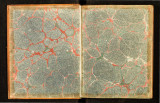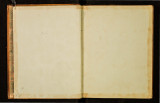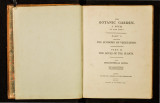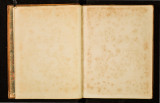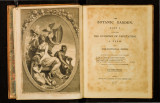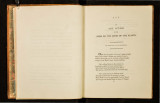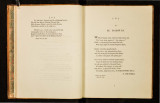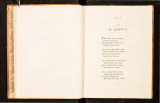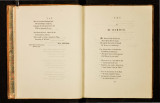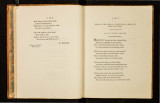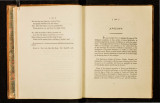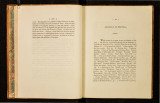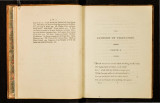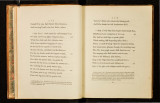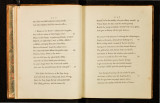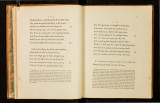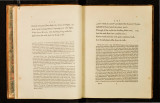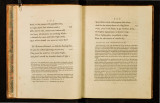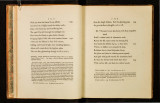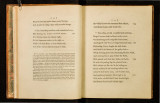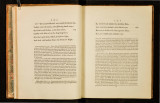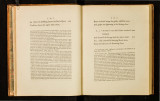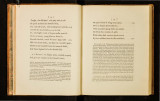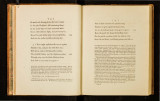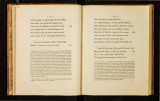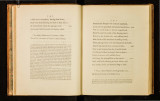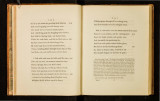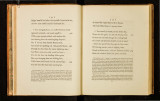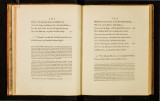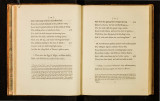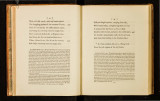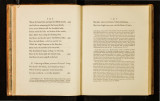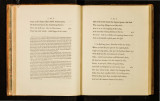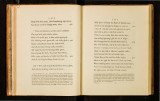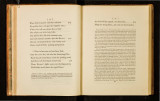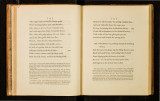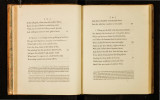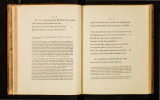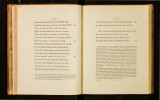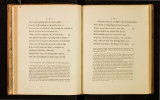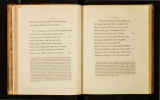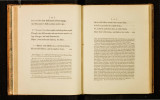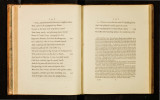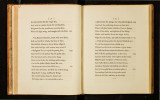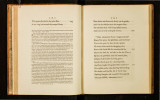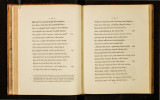| OCR Text |
Show J8 IRON. NoTE XVIII. n as the ccafe to be luminous beneath the water; they are th~n take them_ ~~t ~it~~ file or ~n fand to clean the furface, the heat which the n~etal !bll rutba~meds ;1Uoolcn byeg .m s t o pr educe a fucceflion of colours; if a hard temper be · requtred, the r~ . I' d ain and fl:irred about in cold water as foon as the yellow tmge _appears, r;~~~~s ~~~ieed ;tn the purple tinge appears it becomes fi~ for grave~·s' tools ~fed m "':orkw. g upon me· tals., 'tf cooled w.hi.le blne it is proper for fpnngs. Ntcholfon s Chcmlfhy, P· 3q. Kcir's Chemical Dtcbonary. MODERN PRODUCTION OF IRON. Th cent produCtion of iron is evinced f rem t 11 e c Il a Iy bcate. waters which flow from mc orrca urr:e s w h'I C h J1'e upon gravel-beds, and which mull: therefore havef prho ducedd iron after thofc gravel-beds were raifed out of the fea. 0~ the f~uth fide o t e roa between Cheadle and Okeymoor in Staffordfhirc, yellow !l:a1~s of 1ron a:e feen to pene-trate t h e grave I f r Om a thin morafs on its furface. There 1S a fiffu· re eighth o'lr tebn feet wt·d e, · 1 b d on the eaO:ern fide of the hollow road afcendmg the 1 l a out a 111 a grave- e . Sh !h' h' h mile from Trentham in Staffordfhire, leading toward Drayt_on 111 ~-op Ire~ w 1c_ fi!fure is filled up with nodules of iron-ore. A b~nk ~f fods IS now_ raifed agam!l: th1s fim t event the loofe iron nodules from falling mto the turnptke road, and thus 1 ure o pr - 1 fi!li · b d this natural curiofity is at prefent concealed from travellers. .t: fimi ar _1 ur_e 111 a e , of marl, and filled up with iron nodules and with fome large pieces o~ flmt, 1& fe:n on the eafl:ern fide of the hollow road afcending the hill from the turnp1ke houfe ~ o~t a mile from Derby in the road towards Burton. An'd anot~er fuch fiff~rc fi~led wtth uon no de s, appear S about half a mile from Newton-So.l ney 111 . Derbyflme, .1 11 the road to Burton, near the fummit of the hill. Thefe colleetwns of 1ron and of flmt ~1u!l: have been produced po!l:erior to the elevation of all thofe hills, an~ we~e thence_ evideatly ~f vegetable or animal origin. To which fhould b~ adde~, that 1ron IS found _111 general ~n beds either near the furface of the earth, or flratdiedw1th clay coals or argillaceous gnt, which are themfelves productions of jhe modern world, th:lt is, from the recremcnts of vegetables and air-breathing animals. Not only iron but manganefe, calamy, and even copper and lead, appear in _fome infl:ances to have been of recent produCtion. Iron and manganefe are detetl:ed 1n all vegetable prolluetions, and it is probable other metallic bodi~s might ~e found to _c:irt in vegetable or animal matters, if we had te!l:s to detctl: them 111 very m1nute quantities. Manganefe and calamy are found in beds like iron near the fur face of the earth, and in a calciform !l:ate, which countenances their modern produtl:ion. The recent produtl:ion of calamy, one of the ores of zinc, appears from its frequently incrufling calcareous fpar in its defcent from the furface of the earth into the uppermo!l: fi!fures of the limeO:one mountains of Derby!hire. That the calamy has been carried by its f<,lutionor diffufion in ":~ter into thefe cavities, and not by its afcent from below in form of !l:eam, is evinced from its not only forming a crufl: over the dogtooth fpar, bnt by its afterwards diffolving or ddhoying the fparry cryflal. I have fpecimens of calamy in the form of dogtooth fpar, two inches high, which are hollow, anJ !l:and half an inch above the diminifhed NoTE XVIII. IRON. 39 fparry cryfl:al on which they were formed, like a fheath a great deal too big for it; this feerns to fhew, that this procefs was carried on in water, otherwife after the calamy had incrulled its fpar, and diffolved its furface, fo as to form a hollow cavern over it, it could 110t atl: further upon it except by the interpofition of ferne medium. As thefe fpars and calamy are formed in the finl.~res of mountains they mull: both have been formed after the elevations of thofe mountains. In refpeCl: to the recent produCtion of copper, it was before obfcrved in note on Canto I I. I. 398, that the fummit of the grit-!l:one mountain at Hawkflone in Shrop!hire,. is tinged with copper, which from the appearance of the blue !l:ains feems to have defcended to the parts of the rock beneath. I have a calciform ore of copper confi!l:ing of the hollow cru!l:s of cubic cells, which has evidently been formed on cry!l:als of fluor,. which it has eroded in the fame manner as the calamy erodes the calcareous cry!l:als, from whence may be deduced in the fame manner, the aqueous folutiun or diffufion, as. well as the recent produCtion of this calciform ore of copper. Lead in fmall quantities is fometimes found in the filfures of coal-beds, which [F.ffures are previoufly covered with fpar; and fometimes in nodules of iron-ore. Of the former I have a fpecimen from near Caulk in Derbyfl1ire, and of the latter from Colebrook Dale in Shrop!hire. Though all thefe faCts {hew that fume metallic bodies are formed from vegetable or animal recrements, as iron, and perhaps manganefe and calamy, all which are found near the furface of the earth; yet as tht: other metals are found only in fiffures of rocks, which penetrate to unknown depths, they may be wholly or in part produced by afcending !l:eams from fubterraneous fires, as mentioned in note on Canto II. I. 398. . SEPTARIA OF IRON-STONE. Over fome lime works at Walfall in Stafford!hire, I obferved fome years ago a !l:ratum of iron earth about fix inches thick, full of very large cavities; thefe cavities were evidently produced when the material pafled from a femi-fluid !l:ate into a folid one; as the frit of the potters, or a mixture of clay and water is liable to crack in drying; which is owing to the further contraCtion of the internal part, after the emil: has become hard. Thefe hollows are liable to receive extraneous matter, as I believe gypfum, and femetimes fpar, and even lead; a curious fpecimcn of the laO: was prefentecl to me by Mr~ Darby of Colebrook Dale, which contains in its cavity fome ounces of lead-ore. But there are other fcptaria of iron-fione which fcem to have had a very different origin, their cavities having been formed in cooling or congealing from an ignited Hate, as is ingenioufly deduced hy Dr. Hutton from their internal fhueture. Edinb. Tranfact. Vol. I. p. 246. The volcanic origin of thefe curious fcptaria appears to me to be further evinced from their form and the places where they are found. They confifi of oblate fpheroids and are found in many parts of the earth totally detached from the beds in which they. lie, as at Ea!l:-Lothian in Scotland. Two of thefe, which now lie before me, were found with many others immcrfcd in argillacc:ous fhale or lhiver, furround;d by broken limeftone mountains at Bradbourn near A!hbourn in D~,;byihire,. and were prefented to |



